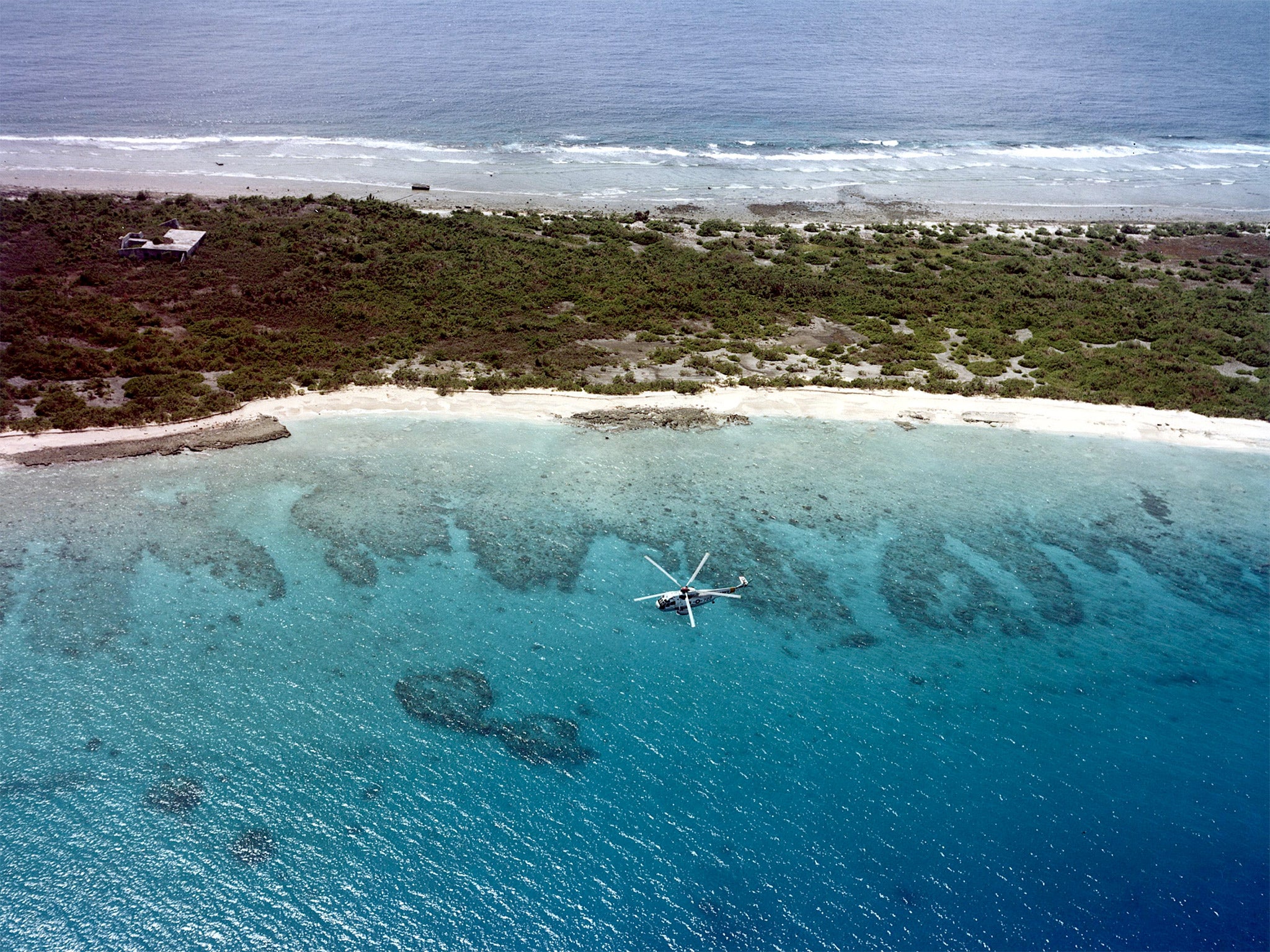'Remarkable': Scientists amazed by thriving marine life at Bikini Atoll site where 23 atomic bombs were dropped
Researchers investigating reports of mutant sharks which are missing their second dorsal fin

Bikini Atoll, the Pacific Ocean site where the United States carried out nuclear testing over 70 years ago, now has an abundant ecosystem of plant and animal life.
Scientists report corals as big as cars and say it is teeming with fish such as snapper, sharks and tuna. Crabs are said to be feasting on coconuts filled with a radioactive groundwater.
The researchers' work featured in Big Pacific, a natural history TV series on PBS. The study focused on diving into a hydrogen bomb crater and investigating reports of mutant sharks which are missing their second dorsal fin.
Steve Palumbi, professor of marine sciences at Stanford University and his team have been studying the effects of radiation poisoning on marine life. He declared the flora and fauna “remarkably resilient” at the Micronesian island, located halfway between Hawaii and Australia.
The scientist reports plentiful schools of fish inhabiting the lagoon, using the living coral as a place to spawn. Profesor Palumbi says fish populations are thriving because they have been left alone - “in a strange way they are protected by the history of this place”.
“It is a remarkable environment, quite odd,” he said in a Guardian report.
The abundant coral seem unharmed by high radiation levels. A research team is investigating how the coral colonies are able to survive – and even thrive - by sequencing their DNA as well as calculating mutation rates and patterns.
The study may also help further develop of studies into diseases in humans. "The terrible history of Bikini Atoll is an ironic setting for research that might help people live longer," Palumbi told Phys.org.
"By understanding how corals could have recolonised the radiation-filled bomb craters, maybe we can discover something new about keeping DNA intact."
Although the natural world is flourishing, the area is still considered dangerous to humans. A report to the United Nations stated that there was “near-irreversible environmental contamination”.
In Strange Glow: The Story of Radiation author Timothy Jorgensen reports on the local inhabitants living on neighbouring islands having high radiation doses. They were at increased cancer risk, particularly leukemia and thryroid cancers.
The detonation at Castle Bravo in the second series of tests during 1954 was 1,100 times bigger than the atom bomb dropped on Hiroshima.
Join our commenting forum
Join thought-provoking conversations, follow other Independent readers and see their replies
Comments
Bookmark popover
Removed from bookmarks